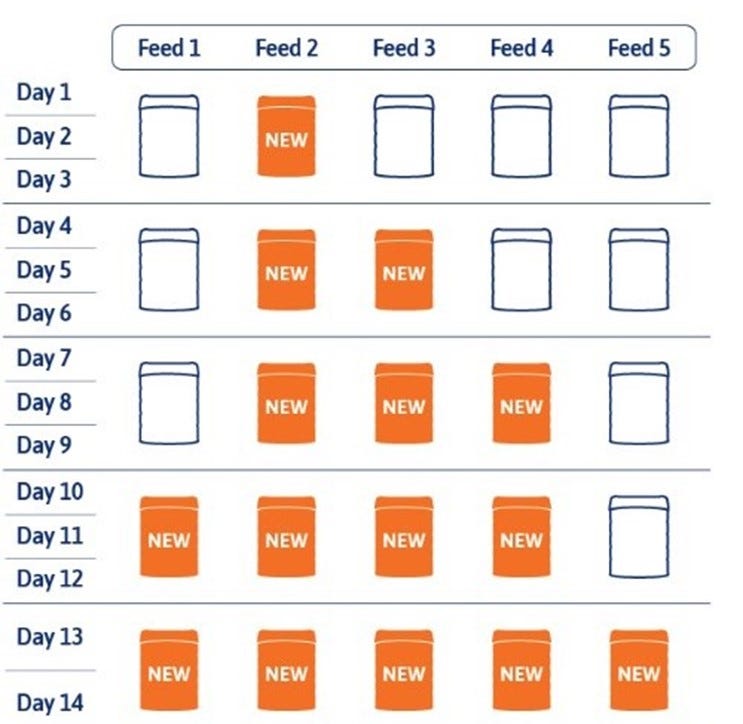
June 21st, 2023
It is important to observe your baby's cues, adjust accordingly, and seek support from a healthcare professional when moving between feeding options. This guide will help assist in providing a smooth transition for you and your baby.
- Alternate feeds between current and new formula
- Do not combine current and new formula in the same bottle.
- Transition the morning feed first.
- Allow baby time to adapt to the new formula.
Example for an infant on 5 formula feeds a day:
- Transition the morning feed first to the new formula.
- Over the next few days gradually introduce the new formula into other daily feeds.
- Transition night-time feeds as the final step in the transition process.
All babies are unique and will tolerate formula transition at their own pace. This is intended as a guide only. A baby may need close to 2 weeks to fully transition to a new formula.
Please contact your healthcare professional if you require further advice on transitioning you baby’s feeds.


IMPORTANT NOTICE: Breast milk is best for babies. Professional advice should be followed before using an infant formula. Good maternal diet is important for breastfeeding and a decision not to breastfeed or partial bottle feed may reduce milk supply making it difficult to reverse. Infant formula should be used as directed as proper use is important to the health of the infant. The preparation requirements and the financial implications of providing infant formula until 12 months of age should be considered before making the decision to formula feed.



